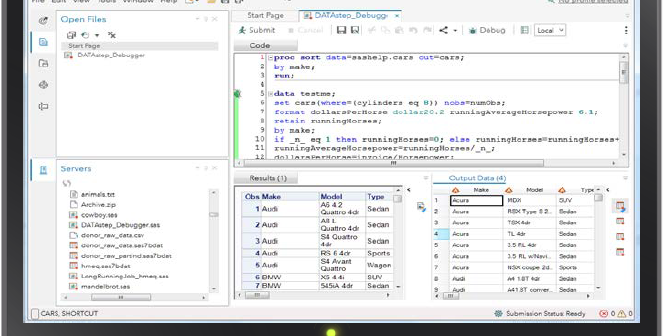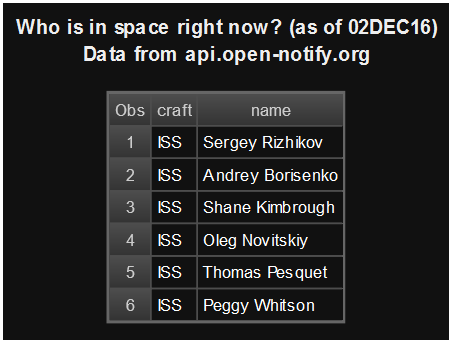The SAS Dummy
A SAS® blog for the rest of us
The title of this blog says what you really need to know: SAS Enterprise Guide does have a future, and it's a bright one. Ever since SAS Studio debuted in 2014, onlookers have speculated about its impact on the development of SAS Enterprise Guide. I think that we have been

Sir Tim Berners-Lee is famous for inventing the World Wide Web and for the construction of URLs -- a piece of syntax that every 8-year-old is now familiar with. According to the lore, when Sir Tim invented URLs he did not imagine that Internet surfers of all ages and backgrounds

Using SAS with REST APIs is fun and rewarding, but it's also complicated. When you're dealing with web services, credentials, data parsing and security, there are a lot of things that can go wrong. It's useful to have a simple program that verifies that the "basic plumbing" is working before

I've used SAS with a bunch of different REST APIs: GitHub, Brightcove, Google Analytics, Lithium, LinkedIn, and more. For most of these I have to send user/password or "secret" application tokens to the web service so that it knows who I am and what data I can retrieve. I do

If you work in a team environment, you might be accustomed to using mapped network drives for source data folders or to publish results. If you've recently moved to a SAS server environment, you might not have those mapped drives available. How can you tell? This question was posted on

The internet is rich with data, and much of that data seems to exist only on web pages, which -- for some crazy reason -- are designed for humans to read. When students/researchers want to apply data science techniques to analyze collect and analyze that data, they often turn to
